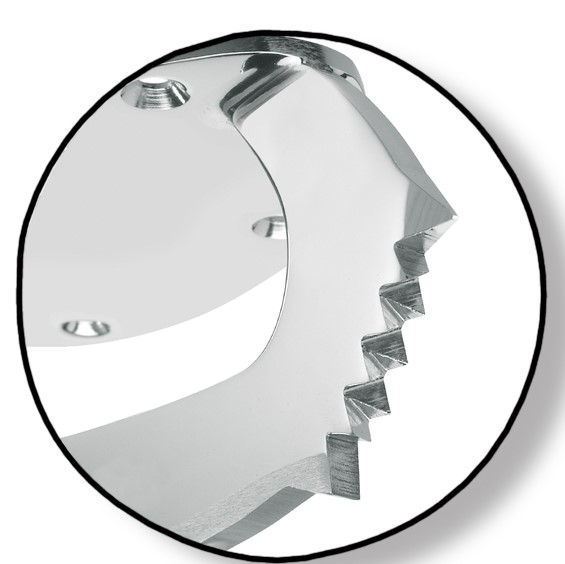Toe Jumps
The Toe Pick
Many people know that one of the most prominent differences between the figure skate and the hockey skate is that figure skates have a mysterious pick on the front:

A toepick on a Jackson Supreme blade
(Image Source: Jackson Ultima, jacksonultima.com)
While some may believe that its only purpose is to cause spectacular falls when learning to skate, it actually serves has very important uses in spins, edge jumps, and, most importantly, toe jumps.
Jumping
Imagine standing on the ground and doing a quick hop. While a physiologist could spend ages discussing the details of human jumping, it is not too complicated to a physicist. A person's muscles contracting provides a downward force into the earth, which, by Newton's Third Law, causes an equal force back up into the jumper, propelling him into the air. Then, by the conservation of mechanical energy, the person slows down and eventually returns back to the ground, where their (hopefully bent) legs act as springs to dissipate the forces of impacting the ground.Jumping On Ice
Think about the hop from the previous paragraph. Barring some sort of joint condition, it is nearly certain that any person jumping will point their toes toward the ground in the air. Jumping flat footed is very difficult for most people, and there is justification from both physics and anatomy to confirm it.From a physics perspective, jumping from flat feet means that the jumper is in contact with the ground for less time, which means that there is less opportunity for acceleration on your way "up."
From an anatomical perspective, pointing you toes allows a jumper to better utilize some muscles for jumping, especially those in the calves.
Now, imagine trying to jump on ice skates. Since there is so friction-bearing surface to jump off, trying to go on your toes would put you on your face. Additionally, for the same reason, you would not be able to use your legs to generate rotation.
Toepick Assisted Jumping
There are two ways to solve this problem: by using edges (see the edge jumps page) or the toe pick. In the toe assisted jumps, the skater skates backwards on one foot while he reaches back with the other one and plunges it into the ice. However, the push is not straight down into the ice, but rather against the direction of motion. Evgency Plyushchenko getting ready to "tap" into the ice with his right (extended) foot
(Image source: International Olympic Committee, 2014 Olympics)
(Image source: International Olympic Committee, 2014 Olympics)
Pushing against the backwards motion of the skates allows the skater's muscles to act as a sort of brake, providing a firm, friction-filled surface for the skater to not only pivot on (for rotation), but a way for the skater to impart a force into the ice to spring them up into the air.
The amount of force that the skater can get impart onto the ice can be found using Newton's second law: by timing how long the skater's "tap" lasts, clocking their initial velocity, and weighing the skater, one can use F=ma to determine how much force they apply to the ice.